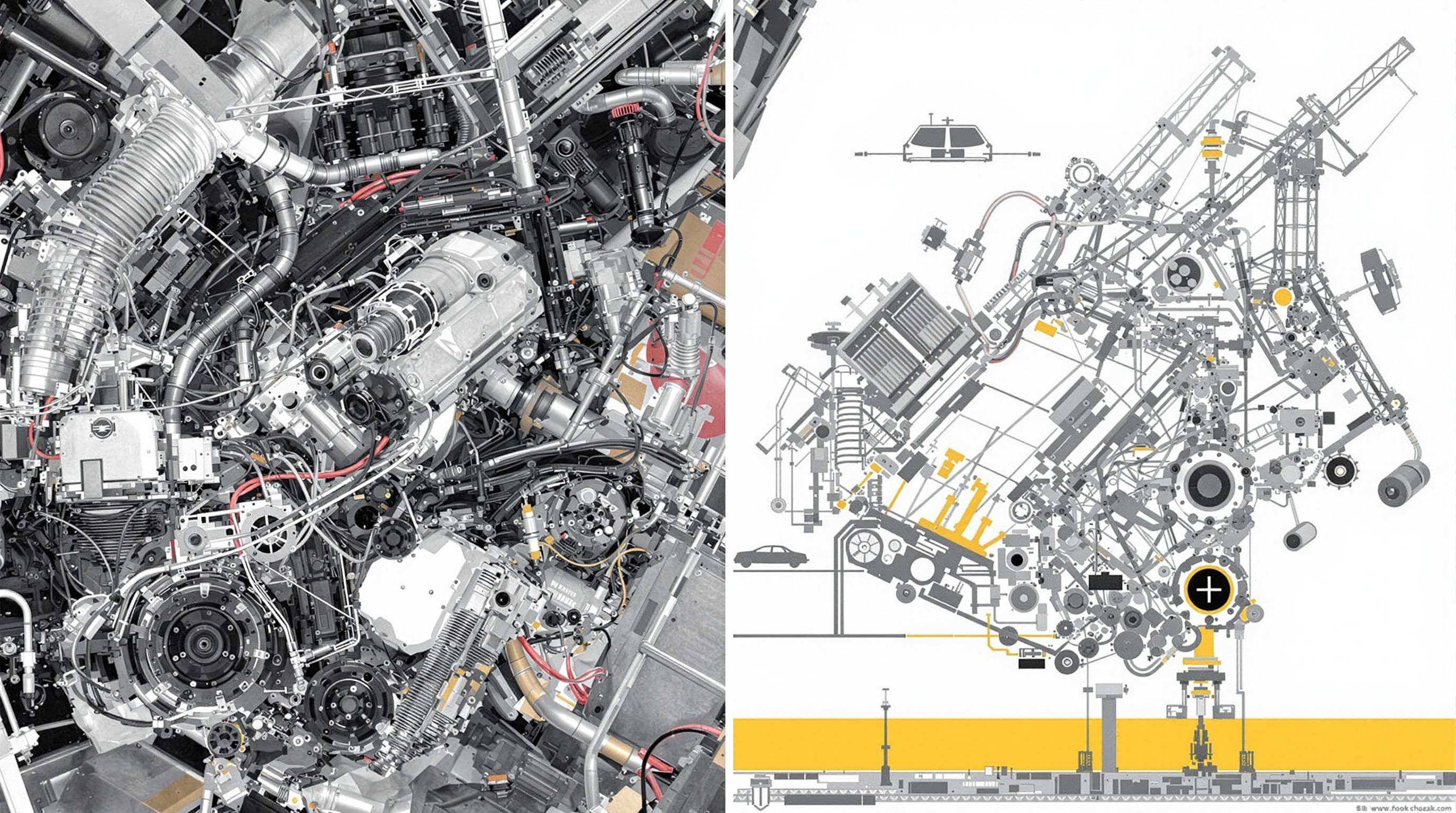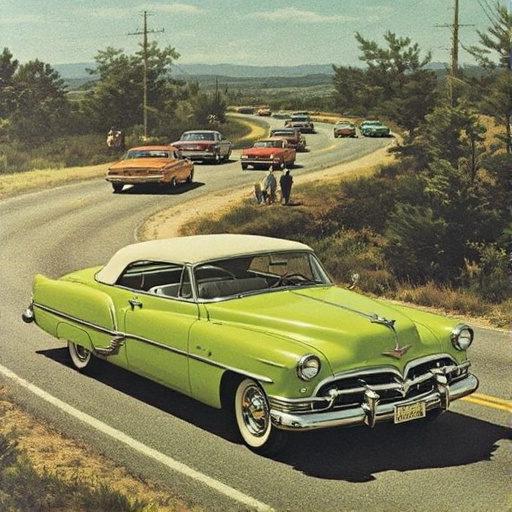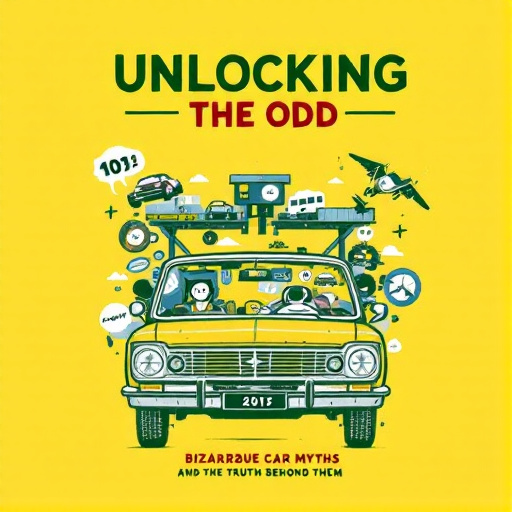Related Articles
- Unveiling the Unthinkable: How Your Social Media Posts Could Impact Your Car Insurance Premiums
- "From Showroom to Social Media: How Dealerships are Becoming Digital Storytellers in 2023"
- "From Showroom to Stream: The Rise of Virtual Reality Test Drives at Dealerships"
- Revving Up Sales: How Virtual Reality is Transforming the Dealership Experience for Shoppers and Sellers Alike
- Selling Experiences: How Dealerships Can Transform into Immersive Automotive Entertainment Hubs
- The Surprising Impact of Your Credit Card Habits on Car Financing: What You Didn't Know!
The Bizarre World of Car Colors: How Hue Affects Safety and Stigma on the Road
The Bizarre World of Car Colors: How Hue Affects Safety and Stigma on the Road
The colors we choose for our cars can do more than just make a statement on the road; they can impact safety, influence resale value, and even carry societal stigma. Join me on this exploration into the bizarre world of car colors, where statistics mix with anecdotes and perceptions shape reality.
The Color of Safety
Did you know that certain car colors are statistically less likely to be involved in accidents? A report by Monash University Accident Research Centre published in the journal "Injury Prevention" found that white vehicles are involved in fewer crashes compared to other colors. In fact, light-colored cars are 12% less likely to be involved in a collision than those painted in darker shades. This illuminates the critical role color plays in visibility, especially at night or in inclement weather.
Why Do Some Colors Dull Our Safety?
It might seem peculiar, but the psychology of color suggests darker hues can be associated with a more aggressive driving style. A study conducted by the University of California, San Diego, indicated that drivers of black or dark-colored cars were more prone to risky behavior and higher rates of accidents. So it’s not merely the color that affects safety—it’s also what those colors represent and how they may influence driver behavior.
Stigmas That Stick
Our society harbors biases that can influence the way we perceive different car colors. If you ask someone about red cars, they might conjure images of fast sports cars and rebellious driving. On the flip side, a green car may evoke feelings of environmental friendliness. These associations can lead to social stigmas based on the car’s hue. In fact, an American Psychological Association study revealed that people often judge personality traits based on car color—red for boldness, white for reliability, and yellow for creativity.
Resale Value and Market Trends
Ever pondered why car manufacturers spend millions on studying color trends? A study from iSeeCars discovered that white, black, and silver cars hold their value longer than other colors. If you're looking to sell your vehicle someday, picking one of these hues might just save you from heavy depreciation. Research indicates that vehicles in these "neutral" colors can retain as much as 70% of their original value after three years!
Anecdotal Observations: The Curious Case of Orange
Now let’s take an amusing detour into the realm of outlier car colors—like orange. Once the symbol of enthusiasm and creativity, orange cars are now often seen as quirky or even bizarre. Many car enthusiasts relish in their orange-hued rides, proudly displaying their unique taste among a sea of mundanity, while others might avoid them due to the stigma attached to brightness. According to Kelley Blue Book, orange cars typically depreciate faster than more popular colors. So, while you flaunt your fiery vehicle on the road, you might want to consider its effect on resale value!
The Gender Divide
While it’s essential to avoid generalizations, there are observed trends regarding color preference between genders. A 2022 survey by PPG Paints found that women prefer blue and purple, while men lean toward black and red. This shows that color can also reflect personality traits and preferences that, in turn, could influence purchasing decisions. Are you leaning towards a bold red, or opting for a subdued blue? Your choice might say more than you think!
Colors That Turn Heads—Or Create Trouble?
Have you ever noticed that certain colors can turn heads for all the wrong reasons? Brightly colored cars, while eye-catching, may also attract the attention of law enforcement. A 2019 analysis by car insurance company Insure.com revealed that certain bright-colored cars like yellow and orange were more likely to incur speeding tickets. People might see these cars as trying to stand out—whether it’s for better recognition on the road or a magnet for attention. If you’re looking to avoid this scrutiny, consider a more muted shade.
Tips for Choosing the Right Color
So, how do you navigate the colorful world of car choices? Here are some tips:
- Prioritize Visibility: If safety is your main concern, consider sticking to lighter colors.
- Gauge Resale Value: Neutral colors typically retain value better. Think about your future finances.
- Reflect Your Personality: Choose a color that resonates with you. If orange is your jam, don't shy away!
- Avoid Trends: Sometimes being a trendsetter can lead to regrettable choices. Remember the “hot pink” trend of the early 2000s!
The Science of Color Psychology
Color can't be understood purely on an aesthetic level. Numerous studies highlight how colors evoke emotions and influence decision-making. According to the Institute for Color Research, people make a subconscious judgment about a person, environment, or product within 90 seconds of initial viewing, with 62% to 90% of that assessment based on color alone. It’s a wild thought that something as simple as car color can wield such power. So which camp do you fall under—do you prioritize safety, trending aesthetics, or perhaps even subconsciously rebelling against societal norms?
Brightly-Cured Debate: To Paint or Not to Paint?
The debate over car color choices often leads to a reflective discussion on personal liberty versus social responsibility. Take the example of a local car modification enthusiast, Jerry, who painted his Mustang neon pink. While this choice expressed his vibrant personality, it also caught the attention of police officer who seemed to pull him over just for standing out. Jerry’s story encapsulates the paradox of individuality—often celebrated but sometimes frowned upon if it’s too ostentatious.
The Final Verdict: A Palette of Choices
As we wrap up this colorful exploration, remember: your car's color tells a story—one that interweaves elements of safety, stigma, and personal identity. In the United States, car colors vary widely, but studies suggest that simple societal norms can create biases that impact everything from safety to resale value. Whether you want a subtle grey sedan or a flamboyant fire-engine red sports car, understanding your choice within the context of safety and social perceptions can transform your driving experience. So, the next time you park, consider the significance of that color; it’s more than just a paint job—it’s a reflection of who you are.
In an age where individuality is prized, remember to choose wisely. Each shade arrives with its own implications, whether beautiful or bizarre. This vibrant world of car colors is full of stories yet to be told, and, after all, who doesn’t love a splash of color in their life?




